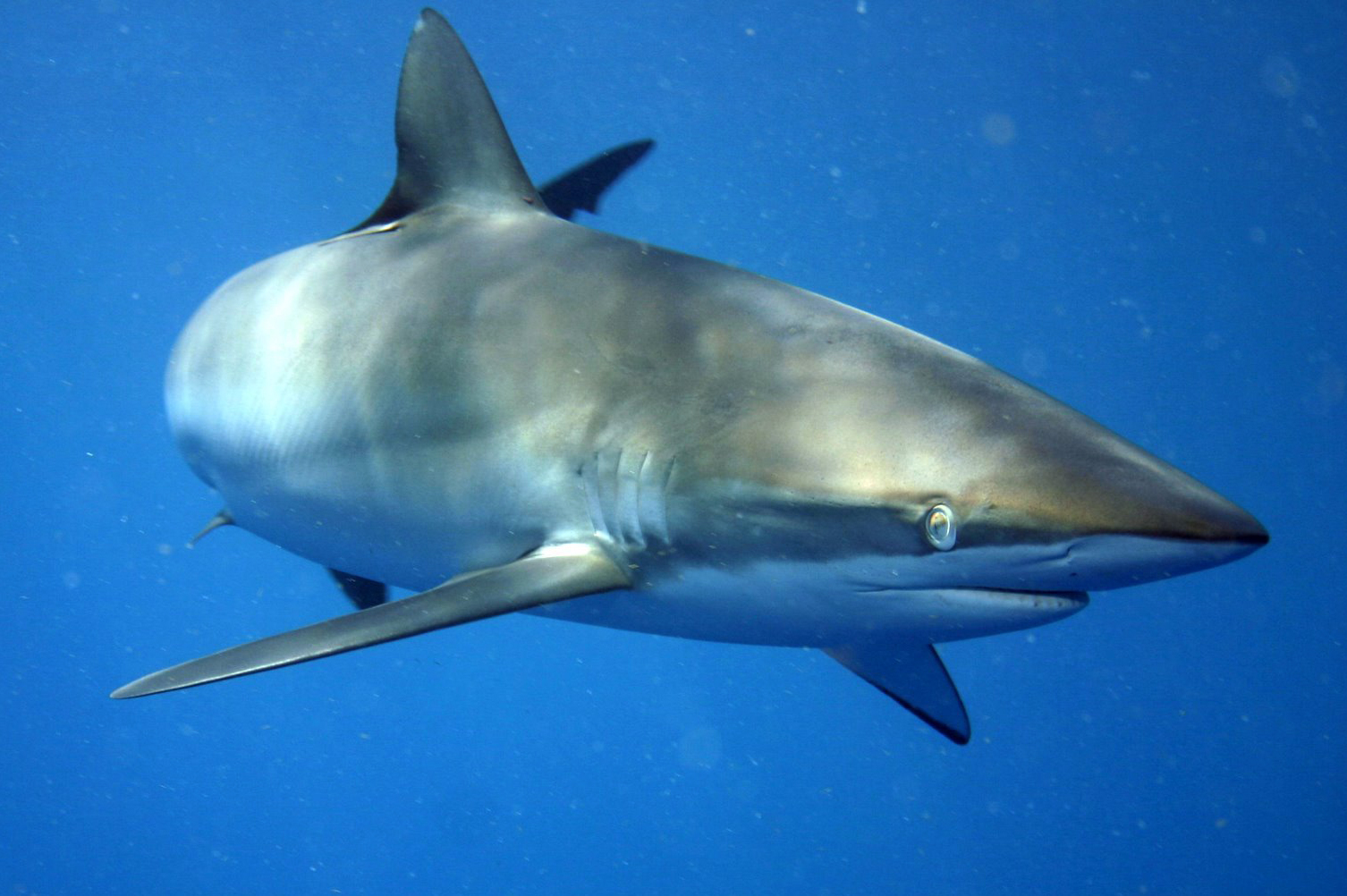Silky Shark, Carcharhinus falciformis (Müller & Henle 1839)
Other Names: Silky Whaler

A Silky Shark, Carcharhinus falciformis, off Cuba. Source: Alex Chernikh / Wikimedia Commons. License: CC by Attribution
Summary:
A large, slender shark with a moderately long, flattened, rounded snout and large eyes. Silky Sharks are grey to bluish-grey above, white below, and have a low second dorsal fin with a very long rear tip. This is the only species in the genus Carcharhinus with an interdorsal ridge in which the dorsal fin originates behind the free rear tips of the pectoral fin.
These aggressive, fast-moving sharks are considered dangerous to humans.
These aggressive, fast-moving sharks are considered dangerous to humans.
Cite this page as:
Dianne J. Bray, Carcharhinus falciformis in Fishes of Australia, accessed 02 Jul 2025, https://fishesofaustralia.net.au/home/species/2887
Silky Shark, Carcharhinus falciformis (Müller & Henle 1839)
More Info
|
Distribution |
This oceanic and coastal-pelagic shark is circumglobal in tropical waters, often around seamounts. |
|
Fisheries |
Targeted or taken as bycatch in some pelagic fisheries, especially by purse seines on drifting FADs (fish aggregating devices). |
|
Author |
Dianne J. Bray |
Silky Shark, Carcharhinus falciformis (Müller & Henle 1839)
References
Bonfil, R., Amorim, A., Anderson, C., Arauz, R., Baum, J., Clarke, S.C., Graham, R.T., Gonzalez, M., Jolón, M., Kyne, P.M., Mancini, P., Márquez, F., Ruíz, C. & Smith, W. 2009. Carcharhinus falciformis. The IUCN Red List of Threatened Species. Version 2015.1.
Hall, N.G., Bartron, C., White, W.T., Dharmadi & Potter, I.C. 2012. Biology of the silky shark Carcharhinus falciformis (Carcharhinidae) in the eastern Indian Ocean, including an approach to estimating age when timing of parturition is not well defined. Journal of Fish Biology 80(5): 1320-1341.







